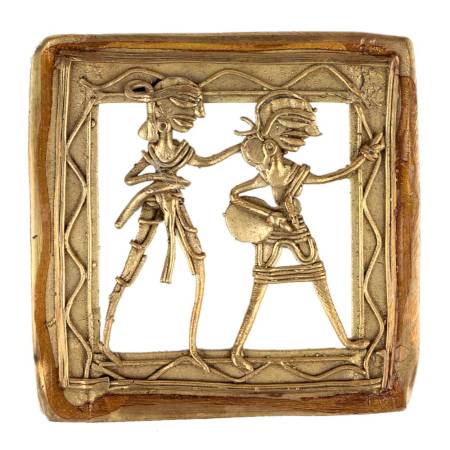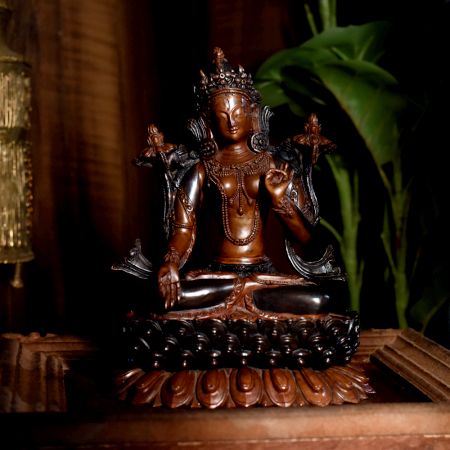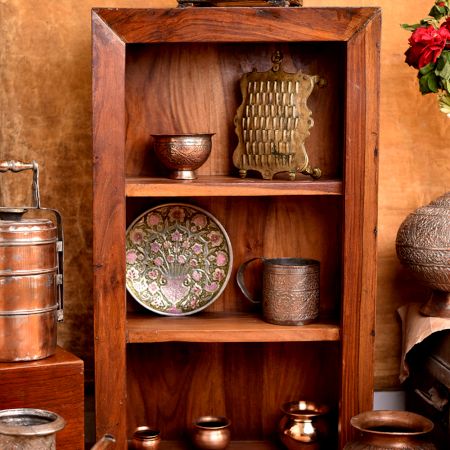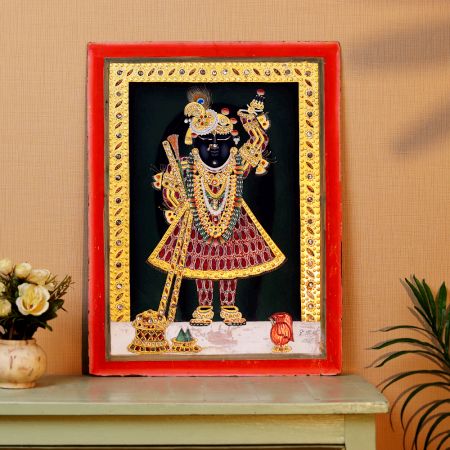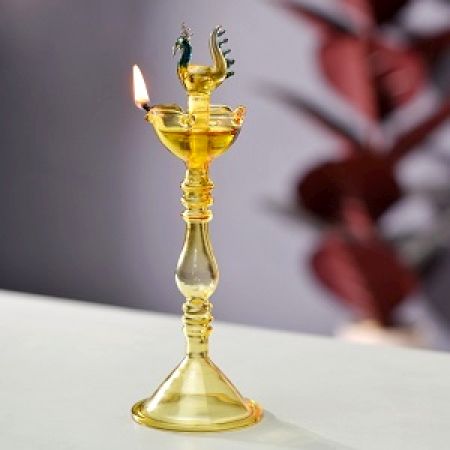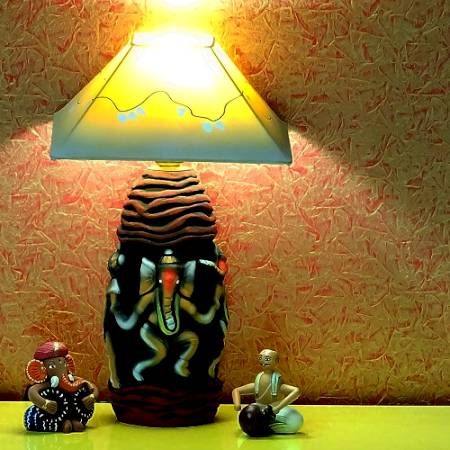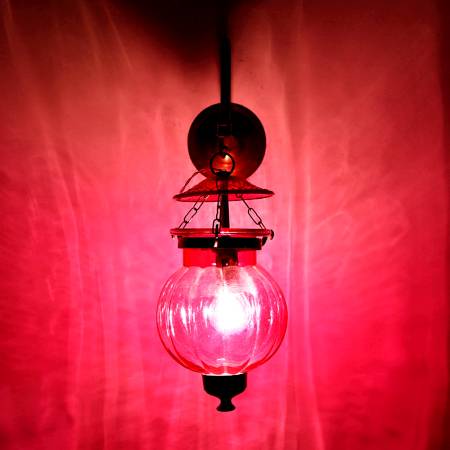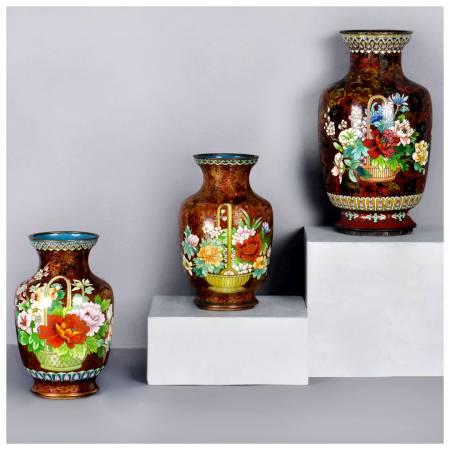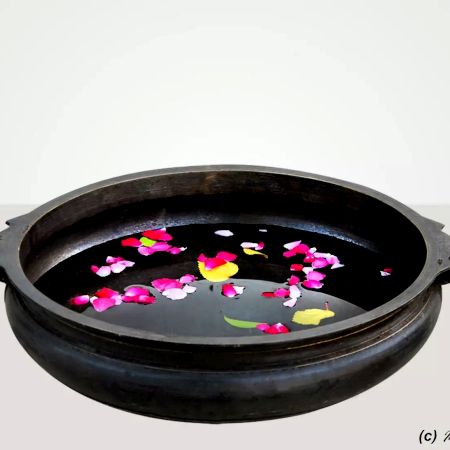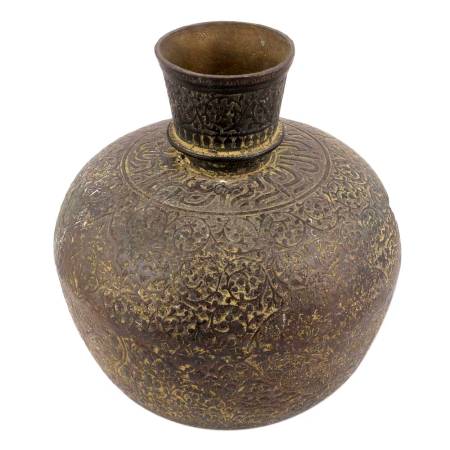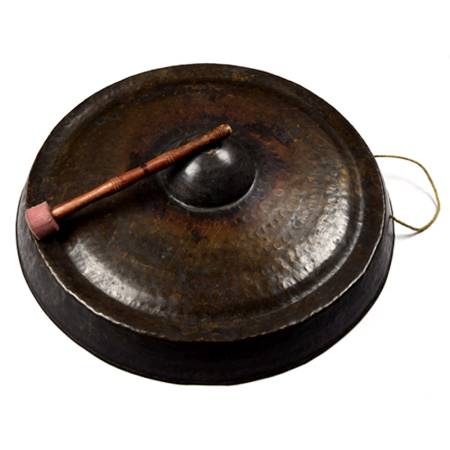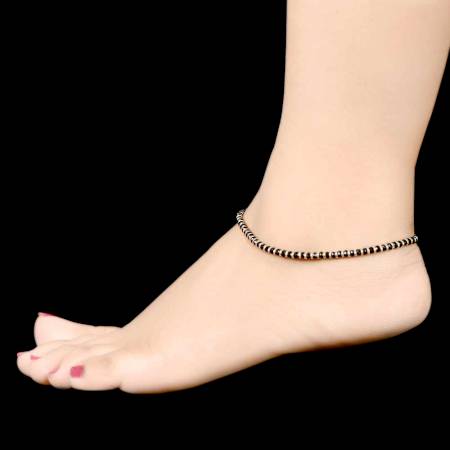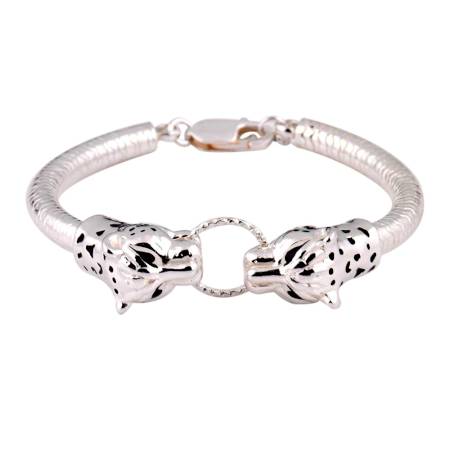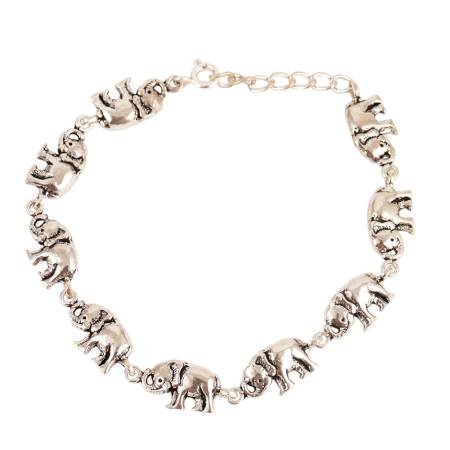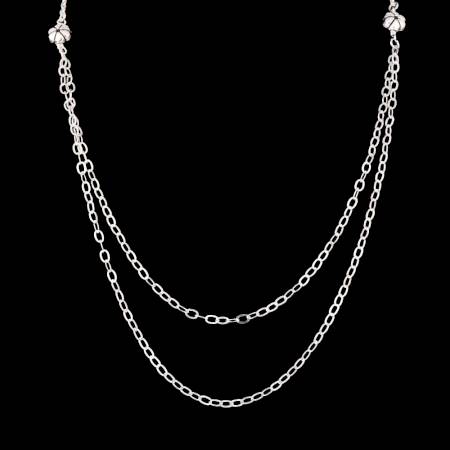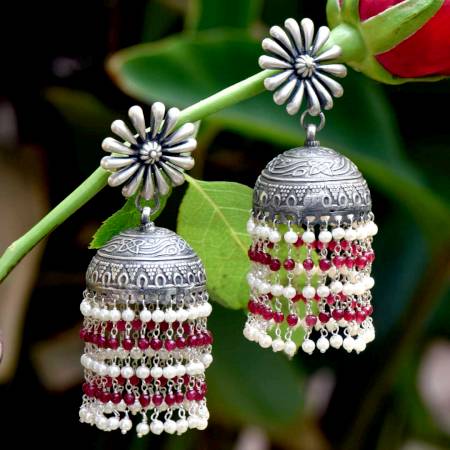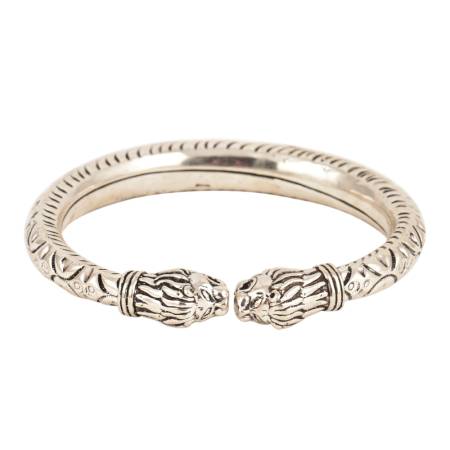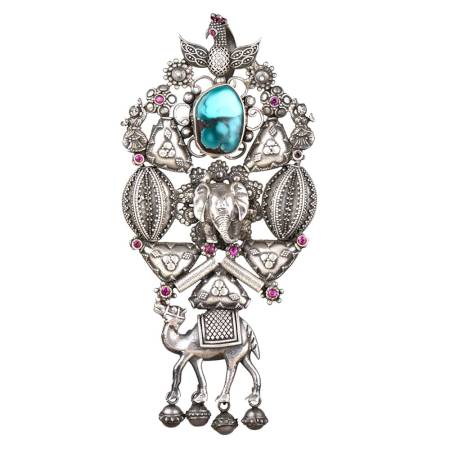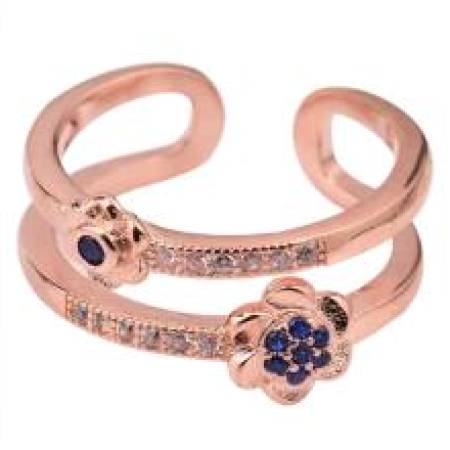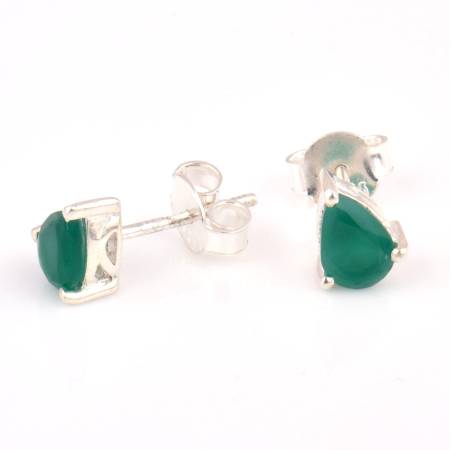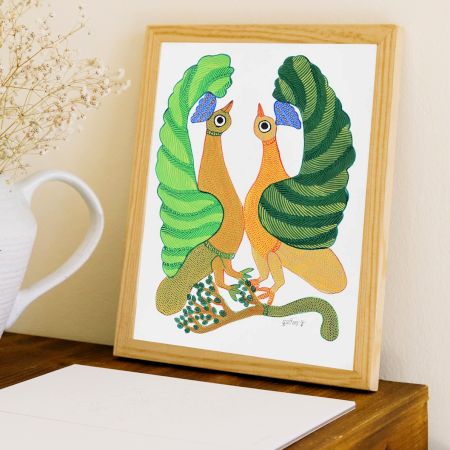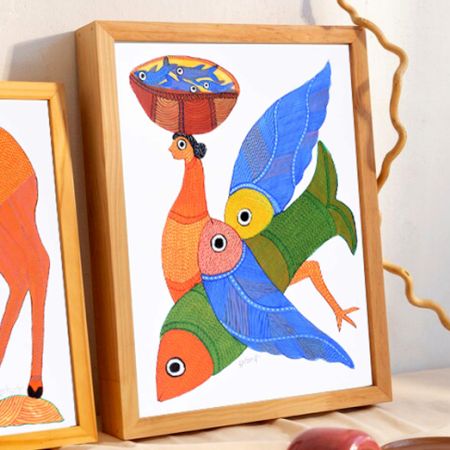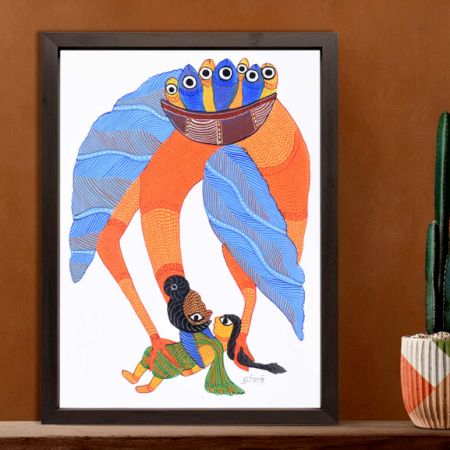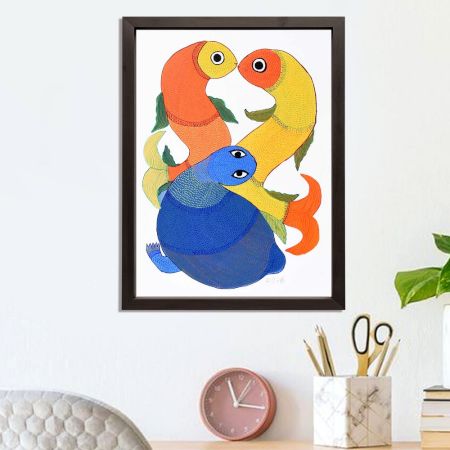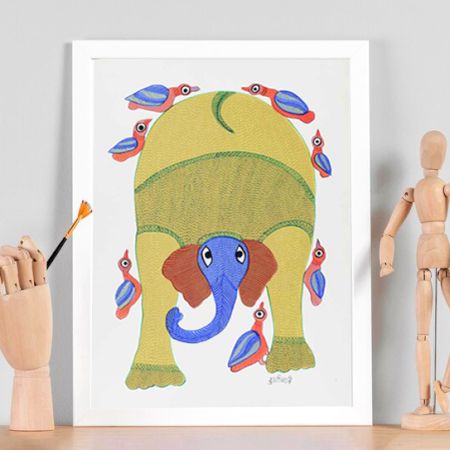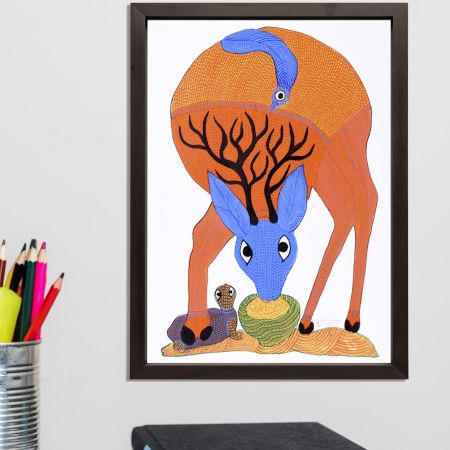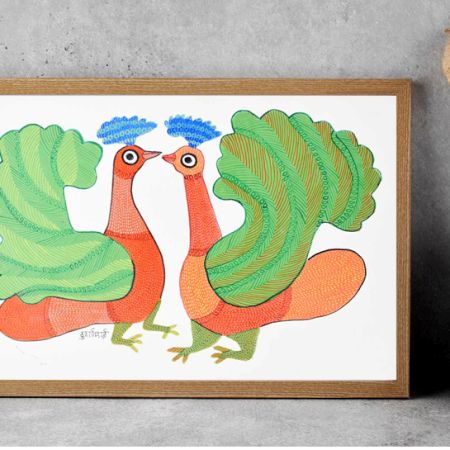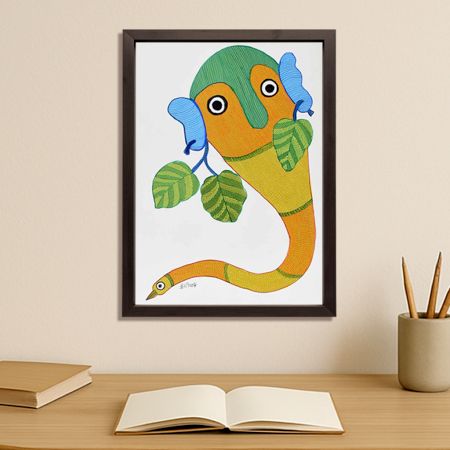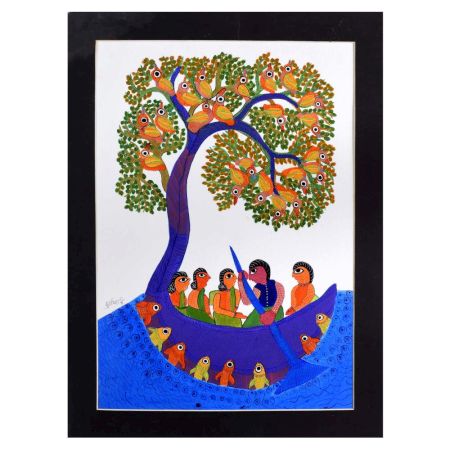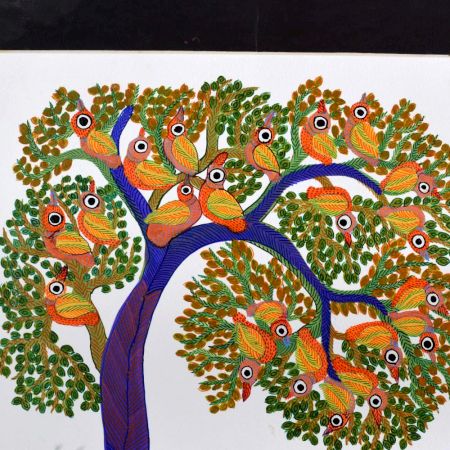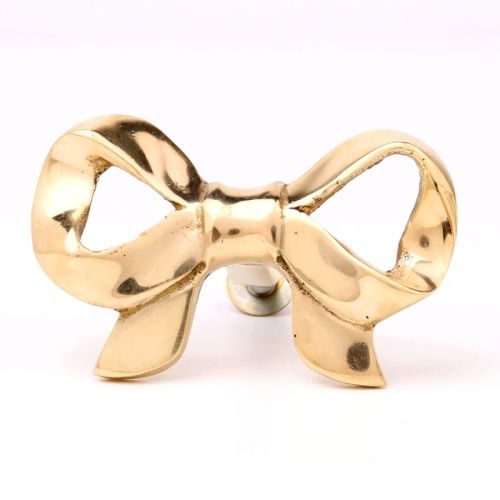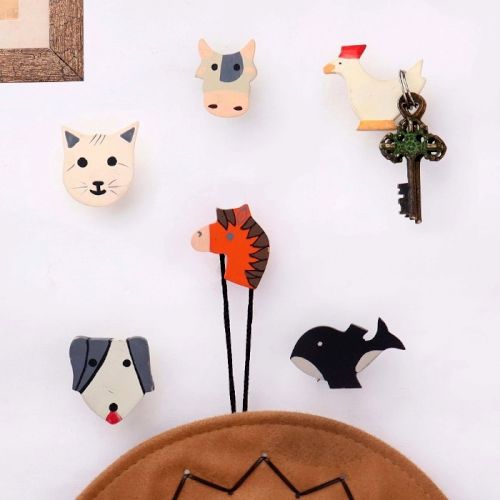-
Hand-Painted Traditional Gond Art Paper Painting by Padma Shri Durgabai Vyam
- ₹ 310,000.00
- 1 In Stock
Gond Paintings
Gond painting is a traditional tribal art form originating from the Gondwana region of Madhya Pradesh, India. Practiced by the Gond tribe, one of India's largest Adivasi (indigenous) communities, the art form serves as a visual storytelling medium rooted in folklore, mythology, and spiritual beliefs.
What is Gond Painting and Where Did it Originate?
The history of Gond painting dates back centuries when Gond people painted walls, floors, and ceilings of their homes with intricate patterns to invoke divine protection and celebrate nature. This was not merely for decoration; it was believed that these paintings could bring good fortune, ward off evil spirits, and capture the spiritual essence of life.
Gond art is deeply linked to animism, a key aspect of Gond tribal belief, where all natural elements like trees, animals, rivers, and even celestial bodies are considered living entities with spiritual significance. This belief influences the artistic themes, making nature a predominant subject.
What Does Each Gond Painting Symbol Represent?
Gond artists often depict animals and birds, each chosen with purpose, representing specific virtues and energies.
- Tigers and Deer: Symbolizing strength and agility, these creatures reflect the resilience of nature and the balance between grace and power.
- Peacocks: Representing beauty, grace, and renewal, peacocks in Gond art often signify joy and celebration, their elaborate feathers mirroring the richness of life.
- Fish: Associated with prosperity and fertility, fish symbolize abundance, as they thrive in water, which is essential for life.
Trees and Nature: A Sacred Connection
Nature plays a central role in Gond culture, reflecting their deep respect for the environment and ancestral heritage.
- Mahua Tree: One of the most revered trees in Gond traditions, the Mahua represents sustenance, livelihood, and spiritual connection. It is often linked to rituals and community gatherings.
- Banyan Tree: A symbol of wisdom, longevity, and shelter, the Banyan tree is depicted as a guardian, providing protection and continuity across generations.
Mythological and Cosmic Symbols: The Eternal Balance
Gond paintings frequently incorporate cosmic elements and divine figures, reflecting their belief in the interconnectedness of the universe.
- Sun and Moon: Representing the eternal cycle of time, the sun is often associated with energy and life, while the moon signifies tranquility and balance.
- Tribal Deities and Gods: These figures act as protectors of the land and community, guiding people with their presence and reinforcing spiritual beliefs.
Color Significance in Gond Art: A Language of Emotions
The choice of colors in Gond paintings is deliberate, each hue carrying cultural and symbolic significance.
- Red: Denotes energy, power, and fertility, often used in depictions of life and vitality.
- Blue: Represents spirituality and divinity, linking the artwork to celestial and mythical realms.
- Yellow: A symbol of knowledge and enlightenment, bringing warmth and clarity to the composition.
- Green: Signifying nature, harmony, and renewal, green highlights the deep connection between the Gond people and their environment.
Each piece of Gond art is more than a visual delight—it is a coded narrative, carrying centuries of folklore, rituals, and cultural values. The intricate patterns, symbolic motifs, and vibrant colors serve as a testament to the tribe’s enduring legacy, keeping their ancestral stories alive for future generations.
Each piece of Gond art is a coded narrative, carrying centuries of folklore, rituals, and cultural values in its patterns.
How is Gond Painting Different from Other Tribal Arts in India?
Gond painting is distinct from other Indian tribal art forms due to its intricate dot-and-line detailing, vibrant color palette, and storytelling techniques. Unlike Warli art, which primarily uses monochrome stick figures to depict social life and rituals, Gond paintings are highly decorative, detailed, and colorful, creating a textured and dynamic effect.
In contrast to Madhubani art, which features geometric patterns and folk motifs, Gond paintings use fine strokes, layers of dots, and curved lines to bring figures to life. Another significant difference is in the medium, while Pattachitra paintings are traditionally made on cloth scrolls or palm leaves, Gond paintings were originally created on walls and floors before transitioning to paper and canvas. This adaptability has allowed Gond painting to evolve into a recognized contemporary art form, expanding beyond its tribal origins while retaining its cultural essence.
What Makes Gond Painting Unique?
Rooted in the rich traditions of the Gond tribal community of central India, Gond painting is more than just an art form—it is a vibrant expression of folklore, nature, and spirituality. Unlike other indigenous styles, such as Warli, which lean towards minimalistic forms, Gond paintings captivate the eye with intricate details and dynamic compositions. What sets this art apart?
Dot-and-Line Detailing
At the heart of Gond painting lies its signature technique—meticulously arranged dots, dashes, and spirals that create a rhythmic flow. This unique detailing not only enhances the texture but also infuses the artwork with a sense of movement, making the subjects appear alive.
Psychedelic Color Play
Gond artists embrace an intense and often surreal use of color. By blending warm and cool tones with striking contrasts, they transform everyday subjects—animals, trees, and deities—into mesmerizing visual narratives. The interplay of colors doesn’t just decorate the canvas; it breathes energy into it.
Storytelling Through Symbolism
Every Gond painting carries a story, deeply embedded in tribal mythology, folklore, and the natural world. Whether depicting a mythical tale, an ancestral legend, or the spirit of the forest, these paintings are layered with meaning, making them a cultural artifact as much as a work of art.
Continuous Evolution
While many tribal art forms remain strictly traditional, Gond painting has evolved with time. Originally painted on mud walls, this art has transitioned onto paper, canvas, and even digital mediums, allowing it to reach wider audiences while preserving its essence.
Gond painting is a testament to the creative ingenuity of the Gond people—a living tradition that continues to thrive, adapt, and inspire.
What are the Different Styles of Gond Painting?
Gond painting, an ancient tribal art form from Madhya Pradesh, has evolved over time while retaining its deep cultural and spiritual roots. Traditionally created to adorn walls and floors of mud houses, this intricate art has now found its way onto paper, canvas, and even digital mediums. Despite these changes, the essence of Gond painting remains deeply connected to storytelling, nature, and symbolism. Broadly, Gond art can be categorized into two primary styles—Traditional Gond Painting and Jangarh Kalam (Contemporary Gond Art).
Traditional Gond Painting
Rooted in the customs of the Gond tribal communities, this style represents the earliest form of the art. Each painting is infused with ancestral wisdom and sacred motifs that reflect the Gond people's connection to nature and their spiritual beliefs.
- Origins and Materials – Traditionally painted on walls, floors, and mud houses using natural pigments derived from plants, charcoal, cow dung, and soil.
- Themes – Nature, mythology, folklore, and everyday tribal life form the core of traditional Gond paintings. Trees, animals, and deities are recurring subjects.
- Pattern-Based Storytelling – Unlike linear narratives, each subject—be it an animal, tree, or celestial body—is filled with intricate dot work, dashes, and repetitive motifs that symbolize energy and movement.
Jangarh Kalam (Contemporary Gond Art)
This modern interpretation of Gond painting emerged through the artistic vision of Jangarh Singh Shyam, a revolutionary Gond artist who introduced new materials and experimental techniques.
- Shift in Medium – Unlike traditional Gond art, which relies on natural pigments, Jangarh Kalam embraces acrylics and poster colors on paper and canvas, allowing for more vibrant and lasting compositions.
- Innovative Techniques – Psychedelic patterns, hyper-detailed textures, and surreal compositions distinguish this style from its predecessor.
- Expanding Horizons – By breaking away from strictly traditional themes, Jangarh Kalam incorporates modern-day subjects, making Gond art globally recognized while still preserving its storytelling essence.
The journey of Gond painting—from the mud walls of tribal villages to international art galleries—is a testament to its adaptability and timeless charm. While the traditional style remains a sacred link to the past, Jangarh Kalam has ensured that Gond art continues to evolve and inspire future generations. Together, these styles showcase the dynamic spirit of Gond painting—one that honors its roots while embracing new possibilities.
Who are the Most Famous Gond Artists?
Several artists have played a crucial role in making Gond painting a respected contemporary art form:
Jangarh Singh Shyam (1962–2001)
The first Gond artist to break into the global art world.His works combined traditional tribal themes with modern artistic sensibilities.Developed the "Jangarh Kalam" style, which is now a category of Gond painting.
Durga Bai
One of the most famous female Gond artists.Her work often integrates feminist themes, tribal folklore, and everyday rural life.
Bhajju Shyam
Gained international fame through his book The London Jungle Book, which reimagined London through Gond artistry.His work bridges traditional storytelling with contemporary experiences.Other notable artists include Venkat Raman Singh Shyam and Ram Singh Urveti, both of whom have contributed to Gond art’s growing global presence.
What Materials Are Used in Gond Paintings?
Gond paintings are traditionally eco-friendly and deeply rooted in sustainable practices. The materials used include:
- Natural Pigments: Extracted from charcoal, limestone, plant sap, cow dung, and minerals.
- Wall and Floor Surfaces: In villages, Gond art was painted directly onto walls, wooden panels, and mud houses.
- Natural Brushes: Made from bamboo twigs and animal hair.
- Acrylic and Poster Colors: More durable and vibrant than natural pigments.
- Canvas, Handmade Paper, and Fabric: Expanding the commercial viability of the art.
- Synthetic Brushes: For finer detailing and a more contemporary finish.
What Techniques Are Used in Gond Painting?
Creating a Gond painting is a layered and intricate process that requires immense patience and skill.
- Sketching the Outline – The artist draws a rough outline of animals, trees, humans, or deities.
- Layering with Patterns – Signature dots, dashes, spirals, and geometric patterns are added to fill the forms.
- Detailing with Fine Lines – This creates a sense of movement, such as feathers on a bird or ripples in water.
- Final Touches – Additional details are added using contrasting colors to create a three-dimensional effect.
Each piece can take anywhere from a week to several months to complete, depending on the complexity.
How is Gond Painting Contributing to Sustainability?
Gond painting is not just an art form, it’s a movement toward sustainable and ethical art production.
- Traditional Gond art relies on natural pigments and handmade surfaces, reducing environmental harm.
- Many Gond artists come from marginalized tribal backgrounds, and this art form provides them economic stability.
- Organizations like Tribes India and Crafts Museums ensure fair wages and recognition for tribal artists.
Where Can I Buy Authentic Gond Paintings?
To purchase genuine Gond paintings, look for handmade, freehand work rather than machine-printed replicas.
- Government-Supported Stores – Tribes India, Madhya Pradesh Handicrafts Emporiums.
- IndianShelf – A trusted platform for traditional Indian crafts, IndianShelf offers a curated collection of handmade Gond paintings, helping preserve and promote this tribal art form.
- Fair-Trade Marketplaces – Gaatha, Ajio Luxe, FolkKala.
- Direct from Artists – Many Gond artists sell their work via Instagram, art fairs, and exhibitions.
How to Use Gond Art in Home Decoration?
Gond paintings can transform a space into a vibrant, culturally rich setting.
- Framed Artwork – Hang a statement piece in your living room or hallway.
- Wall Murals – Use Gond motifs to create a feature wall.
- Home Accessories – Gond-painted trays, cushions, lamps, and furniture add an artistic touch.
For minimalist interiors, use neutral backgrounds with a single vibrant Gond painting as a focal point.
Where Can I Learn Gond Painting?
If you’re interested in learning Gond painting, consider the following options:
- National Handicrafts Academy – Offers expert-led courses.
- Bharat Bhavan, Bhopal – Organizes training sessions by tribal artists.
- Udemy, Skillshare, and YouTube offer step-by-step tutorials.
What are the best Gond art gift ideas?
Gond art, a vibrant and intricate tribal painting style from Madhya Pradesh, makes for a unique and meaningful gift. Whether you're looking for something handcrafted, cultural, or visually stunning, Gond art gifts beautifully capture the essence of Indian folk traditions. Here are some of the best ideas for Gond art gifts across different categories.
Hand-Painted Gond Art Gifts
For those who appreciate detailed craftsmanship, hand-painted gifts offer a personal touch. These are ideal for art lovers and anyone who enjoys handmade tribal decor:
- Diaries and Notebooks – A beautifully hand-painted diary featuring Gond motifs makes for a perfect keepsake. These artistic journals are not just functional but also serve as folk art souvenirs.
- Trays and Coasters – Wooden trays adorned with Gond paintings add a rustic charm to home decor. Pair them with matching coasters for a complete set.
- Jewelry Boxes – Hand-painted wooden jewelry boxes with intricate tribal motifs are a great blend of functionality and artistry, making them a cherished gift.
- Bookmarks – Small yet artistic, Gond art bookmarks make thoughtful and affordable gifts, especially for book lovers.
Gond Prints on Textiles and Lifestyle Products
For a modern twist, Gond art prints on textiles and lifestyle products bring the charm of traditional tribal painting into everyday use:
- Cushion Covers and Wall Hangings – Vibrant Gond art cushion covers can transform any space, making them an excellent home decor gift.
- Scarves and Stoles – Printed or hand-painted Gond art scarves bring an ethnic touch to any wardrobe, making them a stylish and unique accessory.
- Tote Bags and Pouches – Eco-friendly and artistic, these bags featuring Gond art patterns are both practical and visually appealing.
- Mugs and Stationery – Gond art-printed mugs, calendars, and notebooks make for great office gifts and daily-use items with a tribal art touch.
Occasion-Based Gond Art Gifting Ideas
Gond art gifts are perfect for various special occasions, offering a unique alternative to mainstream gifts:
- Diwali Gifts – Hand-painted diyas, decorative trays, and framed Gond paintings are ideal for festive gifting.
- Wedding Gifts – A framed Gond painting, customized home decor pieces, or even Gond art jewelry make thoughtful wedding gifts.
- Corporate Gifts – Gond art diaries, coasters, and stationery sets add an artistic touch to professional gifting while promoting India’s rich folk traditions.
Whether you're gifting for a special occasion or simply sharing the beauty of traditional Indian folk art, Gond art gifts are a timeless and meaningful choice. Their intricate patterns and deep cultural significance make them more than just objects—they are stories painted by skilled tribal artists.
How Can I Identify an Original Gond Painting?
Gond painting, a traditional tribal art form from central India, is celebrated for its intricate patterns, vibrant colors, and deep connection to folklore. However, with the growing popularity of this art, mass-produced imitations have become common. To ensure authenticity, here are some key aspects to look for when identifying an original Gond painting:
Check the Artist's Signature and Certificate of Authenticity
Most genuine Gond paintings are signed by the artist, often at the bottom or along the edges of the artwork. Established Gond artists, such as Jangarh Singh Shyam and his contemporaries, mark their works with their distinct signatures. Additionally, reputed galleries and organizations provide certificates of authenticity, verifying that the painting is a handcrafted, original piece. If a seller cannot provide such documentation, it’s best to be cautious.
Look for Freehand Imperfections and Layered Textures
One of the hallmarks of an original Gond painting is its intricate, freehand detailing. Since each stroke is carefully hand-drawn, slight imperfections or variations in pattern density are natural. Authentic pieces often have layered textures created by fine lines, dots, and dashes, which add depth and richness to the artwork. If the design appears too uniform or mechanically precise, it might be a reproduction.
Avoid Mass-Produced Prints and Machine-Stamped Designs
Mass-produced versions of Gond paintings often lack the warmth and individuality of handmade artwork. Machine-printed pieces may have flat, repetitive patterns with no variation in brushstroke intensity. Additionally, many fake artworks are printed on synthetic materials rather than the traditional handmade paper or canvas used by tribal artists. If the piece looks overly polished or identical to multiple other versions, it is likely not an original.
By paying attention to these details—artist verification, textural depth, and the absence of mechanical replication—you can distinguish an original Gond painting from imitations. Supporting genuine tribal artists not only ensures you own an authentic piece of art but also helps preserve this culturally significant tradition.
FAQs
How Long Does It Take to Make a Gond Painting?
The time required to complete a Gond painting depends on its size, complexity, and the artist’s experience. A small piece with minimal detailing might take a few days, while larger works with intricate patterns can take weeks or even months. Since Gond art is entirely handmade, artists meticulously layer fine dots, lines, and dashes to create depth, which requires patience and precision. The more detailed the artwork, the longer it takes to finish.
Can I Frame Gond Paintings for Home Décor?
Yes, Gond paintings make stunning additions to home décor and can be beautifully framed. Since they are traditionally created on paper or canvas, framing helps protect the artwork from dust and moisture. Opt for a glass or acrylic frame with a sturdy border to preserve the painting’s intricate details. A wooden frame complements the tribal aesthetic, enhancing its natural appeal.
Are There Any Gond Art Workshops for Kids?
Many organizations, museums, and art schools conduct Gond art workshops for kids, introducing them to the beauty of tribal storytelling through painting. These workshops teach children how to use traditional motifs, earthy colors, and freehand techniques while fostering creativity and appreciation for indigenous art forms. Online workshops have also gained popularity, making it easier for children worldwide to explore this art.
Do Gond Artists Use Eco-Friendly Materials?
Traditional Gond artists often use eco-friendly materials, staying true to the tribal art’s natural roots. Originally, they painted on mud walls using natural dyes derived from plants, charcoal, and soil. Today, many artists continue using organic pigments, handmade paper, and natural brushes. However, with commercialization, some modern artists use acrylics and synthetic colors for durability and vibrancy.
Which Surface Is Best for Gond Painting: Paper, Canvas, or Wood?
Each surface offers a unique texture and durability:
- Paper: Traditional and commonly used by Gond artists, especially handmade or textured paper, which absorbs natural colors well.
- Canvas: Provides a smoother, long-lasting base and is ideal for larger artworks. It is also more durable than paper.
- Wood: A traditional surface for mural-like Gond paintings, giving a rustic and organic feel. The texture of wood enhances the artwork’s natural appeal.
Choosing the right surface depends on personal preference and the intended use of the painting.
